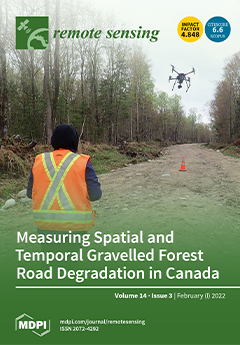The mistletoe
Phoradendron velutinum (P. velutinum) is a pest that spreads rapidly and uncontrollably in Mexican forests, becoming a serious problem since it is a cause of the decline of 23.3 million hectares of conifers and broadleaves in the country. The lack of adequate phytosanitary control has negative social, economic, and environmental impacts. However, pest management is a challenging task due to the difficulty of early detection for proper control of mistletoe infestations. Automating the detection of this pest is important due to its rapid spread and the high costs of field identification tasks. This paper presents a Genetic Programming (GP) approach for the automatic design of an algorithm to detect mistletoe using multispectral aerial images. Our study area is located in a conservation area of Mexico City, in the San Bartolo Ameyalco community. Images of 148 hectares were acquired by means of an Unmanned Aerial Vehicle (UAV) carrying a sensor sensitive to the
R, G, B, red edge, and near-infrared bands, and with an average spatial resolution of less than 10 cm per pixel. As a result, it was possible to obtain an algorithm capable of classifying mistletoe
P. velutinum at its flowering stage for the specific case of the study area in conservation area with an Overall Accuracy (OA) of 96% and a value of fitness function based on weighted Cohen’s Kappa (
) equal to 0.45 in the test data set. Additionally, our method’s performance was compared with two traditional image classification methods; in the first, a classical spectral index, named Intensive Pigment Index of Structure 2 (SIPI2), was considered for the detection of
P. velutinum. The second method considers the well-known Support Vector Machine classification algorithm (SVM). We also compare the accuracy of the best GP individual with two additional indices obtained during the solution analysis. According to our experimental results, our GP-based algorithm outperforms the results obtained by the aforementioned methods for the identification of
P. velutinum.
Full article





